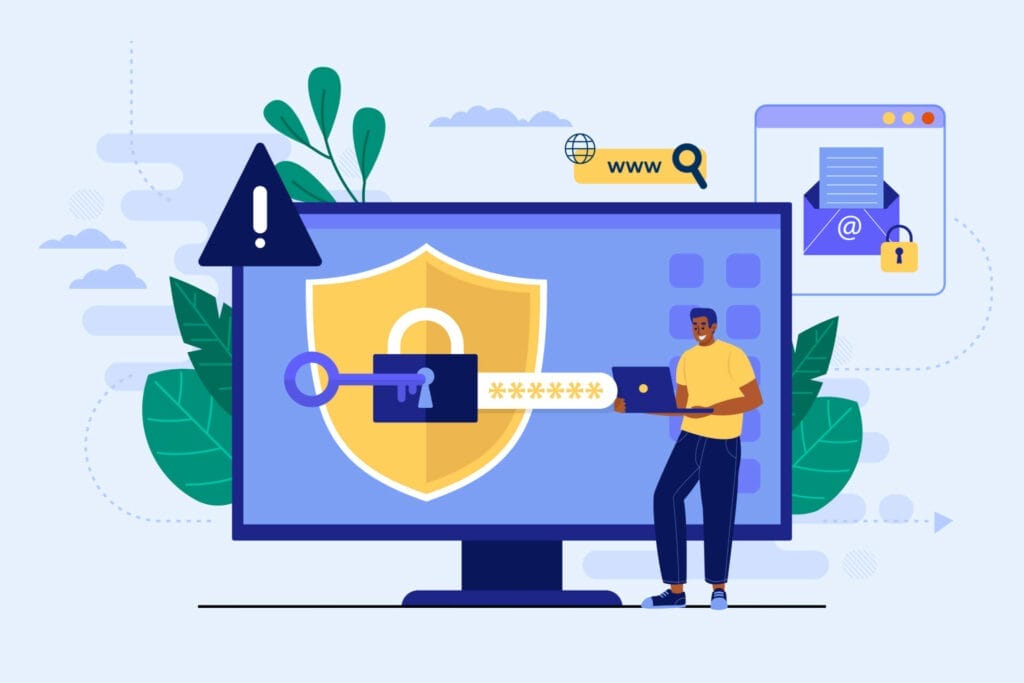Protecting Your Site and Your Users
In today’s digitally-driven world, the importance of website security cannot be overstated. The internet is rife with cyber threats, making it imperative for website owners to prioritize security measures. This blog post aims to provide a comprehensive guide to website security, offering practical insights and actionable steps to safeguard both your site and the sensitive data of your users.
1. Understanding the Threat Landscape:
The threat landscape in web security is diverse and ever-evolving. Phishing attacks, where attackers impersonate legitimate entities to trick users into revealing sensitive information, are a common menace. SQL injection exploits vulnerabilities in database queries, while Cross-Site Scripting (XSS) involves injecting malicious scripts into websites viewed by other users. Distributed Denial-of-Service (DDoS) attacks overwhelm a website’s servers with traffic, causing service disruption. By comprehending these threats, you can tailor your security measures accordingly, implementing strategies such as secure coding practices and regular threat assessments.
2. SSL Encryption:
SSL (Secure Sockets Layer) encryption is like a secure tunnel for data transmission between users and your website. Consider the example of a user entering login credentials or payment details. Without SSL, this information is susceptible to interception. Implementing SSL ensures that this data is encrypted, making it significantly more challenging for cyber criminals to intercept and misuse.
3. Regular Software Updates:
Outdated software is akin to leaving a door open for cybercriminals. Content Management Systems (CMS), plugins, and server software should be promptly updated to patch vulnerabilities. Take WordPress, for instance, which frequently releases updates addressing security issues. Regularly updating your WordPress site is not just about adding new features but is crucial for closing potential security loopholes.
4. Strong Password Policies:
Enforcing robust password policies is essential. Encourage users and administrators to use complex passwords with a mix of uppercase and lowercase letters, numbers, and special characters. Two-factor authentication (2FA) adds an extra layer of security, requiring users to confirm their identity through a secondary method, such as a code sent to their mobile device. This mitigates the risk of unauthorized access even if passwords are compromised.

5. Firewalls and Security Plugins:
Firewalls act as vigilant guards, monitoring and filtering traffic to your website. Web Application Firewalls (WAFs) specifically filter and monitor HTTP traffic, preventing common attacks. Security plugins, like Wordfence for WordPress, offer a suite of protective features, including firewall protection, malware scanning, and real-time monitoring of login attempts. These tools serve as a frontline defense against various cyber threats.
6. Backup Your Data:
Regularly backing up your website data is a crucial safety net. In the event of a security breach or data loss, having recent backups ensures you can swiftly restore your site to a previous, unaffected state. Automated backup solutions, such as UpdraftPlus or cPanel backups, simplify the backup process, making it an integral part of your overall security strategy.
7. User Permissions and Access Control:
Managing user permissions and access is a vital aspect of website security. Not every user requires administrative privileges. Following the principle of least privilege, limit access to sensitive areas of your website. This reduces the potential damage in case a user account is compromised, as unauthorized access to critical functions is restricted.
8. Security Audits and Penetration Testing:
Regular security audits and penetration testing are proactive measures to identify and rectify vulnerabilities. Services like OWASP ZAP and Nessus scan your website for potential weaknesses, allowing you to patch them before malicious actors exploit them. This continuous improvement cycle strengthens your website’s defenses over time.
9. Educate Your Team and Users:
Human error is a significant factor in security breaches. Educate your team and users about cybersecurity best practices. Conduct training sessions on recognizing phishing attempts, stress the importance of using strong passwords, and highlight the risks associated with downloading attachments or clicking on suspicious links. Building a security-aware culture among your stakeholders is an ongoing investment in your website’s safety.
10. Monitor Website Activity:
Real-time monitoring tools are essential for detecting unusual patterns or suspicious behavior on your website. Tools like Sucuri or Google Analytics can help you monitor website traffic and user behavior. Swiftly addressing anomalies prevents potential security threats from escalating, allowing you to take corrective action promptly. Regularly reviewing these insights is key to staying one step ahead of potential security issues.
Conclusion:
By incorporating these advanced measures into your website security strategy, you can create a robust defense against an ever-evolving array of cyber threats. Remember, investing in website security is an ongoing process, and staying vigilant is key to maintaining a secure online presence for your site and protecting the trust of your users. Prevention remains the cornerstone of effective website security.


